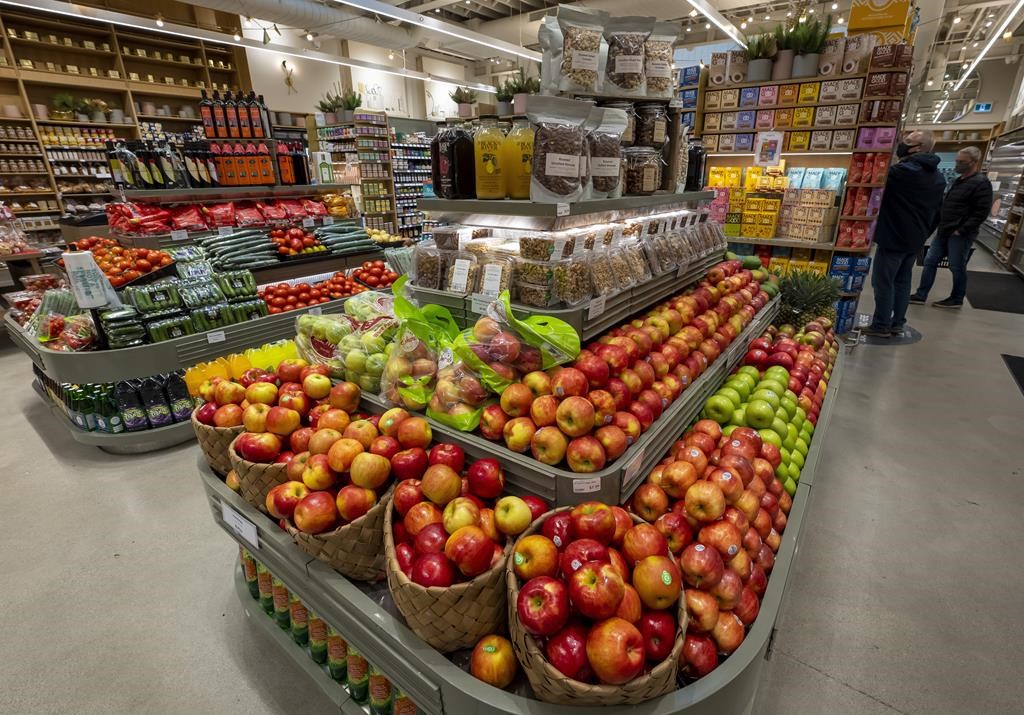Canada grocery costs may fall as UN report shows food prices dropping

Posted Aug 11, 2022 4:45 pm.
Last Updated Aug 11, 2022 5:04 pm.
Canadians could see lower grocery bills as food prices drop for the fourth month in a row, according to a United Nations Agricultural Organization report.
The Food and Agriculture Organization (FAO) Price Index (FFPI), which measures the monthly change in international prices of food in the world, has seen continued drops in their index, with a total drop of 13.3 points, which amounts to price decreases around the world.
While the FFPI drop in July was the steepest drop in points since October 2008, which translates to overall food price percentage drops around the globe, it is still higher than its value in 2021, up by 16.4 points. This amounts to higher global food prices than last year, but prices have shown a decrease with this recent trend.
Dr. Sylvain Charlebois of Dalhousie University in Halifax, a Canadian researcher and professor in food distribution, say people have a lot of promotions and discounts to look forward to.
“Generally speaking, food inflation is not going to be as much as a challenge, which is actually going to give some grocers some breathing room to plan for discounts and promotions, which is actually going to help consumers,” Charlebois said.
RELATED STORIES:
-
Is buying groceries still the cheapest meal plan?
-
Quarter of Canadians believe the country is already in a recession: poll
Groceries bills are expected to see a drop as a result of the trend of these rates, but the market may not see a change for months to come, according to Charlebois.
“There is a bit of a lag affect when it comes to commodity prices and retail prices, depending on the commodity you look at,” Charlebois said.
“So, bakery [products] you might look at a three-to-six month lag. Meat products — beef for example — can go up to a year, so it really depends on the food products you look at.”
The FAO Cereal, FAO Vegetable Oil, FAO Dairy, FAO Sugar and the FAO Meat Price Index have all been coming down over the last four months. The vegetable Price Index decreased by 19.2 per cent compared to June, marking a 10-month low.
The UN says the drop in prices was led by large percentage drops in the cost of vegetable oils and cereals, with the recent UN-brokered deal on Ukrainian grain exports being a reason for the decrease.
RELATED STORIES: Greedflation: Canadian consumers warned about shrinking packages, price gouging
The price of food purchased at stores rose 9.7 per cent in May compared with a year ago as the cost of nearly everything in the grocery cart climbed higher, StatsCan said last month.
StatsCan also says that 43 per cent of Canadians found food prices affected their budget the most, with transportation following behind at 32 per cent.
With food costs at alarming highs, Charlebois is asking people to be careful with what they are buying as “greedflation” is still an issue.
“Manufacturers will reduce quantity and maintain current prices, so you will get less for the same amount of money, and so you’ll see more shrink-flation cases when commodity prices go up, so you got to be careful, you got to monitor exactly what you’re buying,” Charlebois said.
The U.S. inflation rate has dropped by 0.6 per cent from 9.1 per cent to 8.5 per cent, which looks promising for Canadian markets.
Statistics Canada (StatsCan) reports that Canadian inflation rates is currently up at 8.1 per cent from June of last year, a nearly 8 per cent gain in May. The increase was the largest yearly change since Jan. 1983.
The FFPI combines all the price indexes to measure global prices for exported agricultural goods. It has the average of the group prices weighed by the average export shares of each of the groups in 2014-2016.
-With files from Kelsey Patterson and Jillian Code








